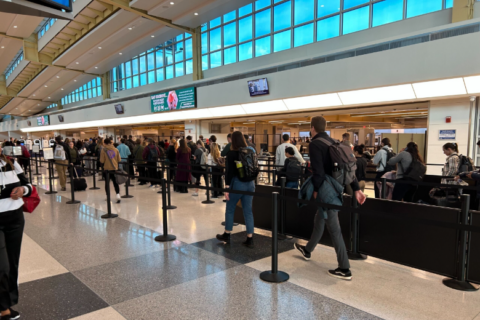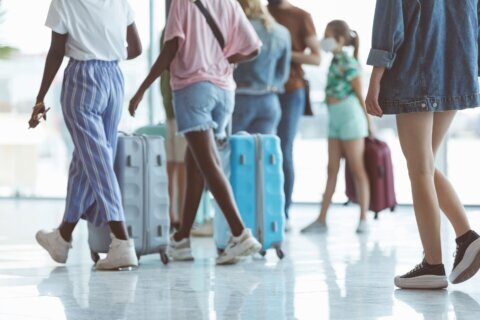DULLES, Va. — As the Transportation Security Administration apologizes to hundreds of airline passengers who have missed flights this week due to staggeringly long security screening lines, some fliers fear the worst is yet to come.
With the summer travel season nearing, the TSA has warned passengers to get to the airport three hours early, to ensure enough time to get through security.
Complaints about airport security delays have increased 10-fold in the last year, according to the Department of Transportation. Bloomberg reports passengers also complained more this year about screeners’ lack of courtesy and rough handling of travelers’ personal property.
With more passengers flying, and the TSA trying to keep up with hiring and training screeners in the high-turnover position, the agency has been trying to provide reasonable expectations, and enable passengers to make the airport experience as pleasant as possible.
A free smartphone app — My TSA, available for iOS and Android includes airport-specific information.
One feature gathers crowdsourced information on security wait times at different checkpoints throughout each airport.
With few clicks, participating passengers can click on their location, and observe whether the wait time at that checkpoint has: No wait, 1 to 10 minutes, 11 to 20 minutes, 21 to 30 minutes, or more than 31 minutes. That information becomes visible to other passengers using the app’s feature.
The app, and other apps including FlightAware, on iOS and Android provide real-time flight status and map tracking on any commercial flight worldwide.
Dulles International Airport, Reagan National Airport, and BWI Marshall Airport all offer enrollment in TSA PreCheck, which enables participating passengers to avoid some of the time-consuming security screening steps.
There will be more American travelers standing in those TSA lines this summer.
D.C.-based airline industry trade group Airlines for America predicts a record 231.1 million Americans will fly between June 1 and Aug. 31 this summer. That’s 95,000 more passengers per day than last summer.
To accommodate record volumes, airlines will offer 2.78 million seats per day to meet demand, an increase of more than 109,000 compared to a year ago.
There is one bright spot for Americans planning to fly this summer. It’s cheaper.
The trade group says average airfares are 6.7 percent lower than a year ago.









